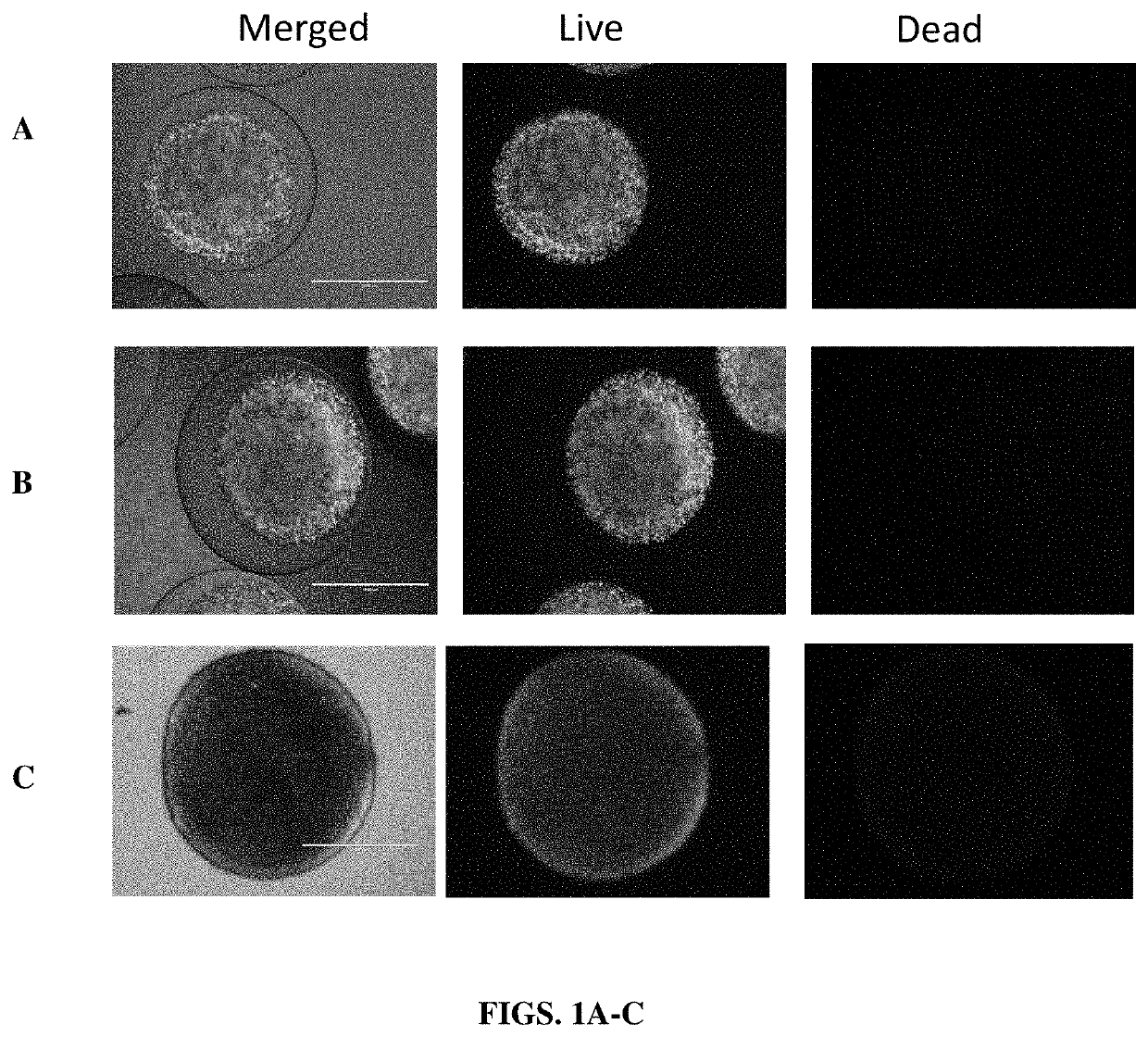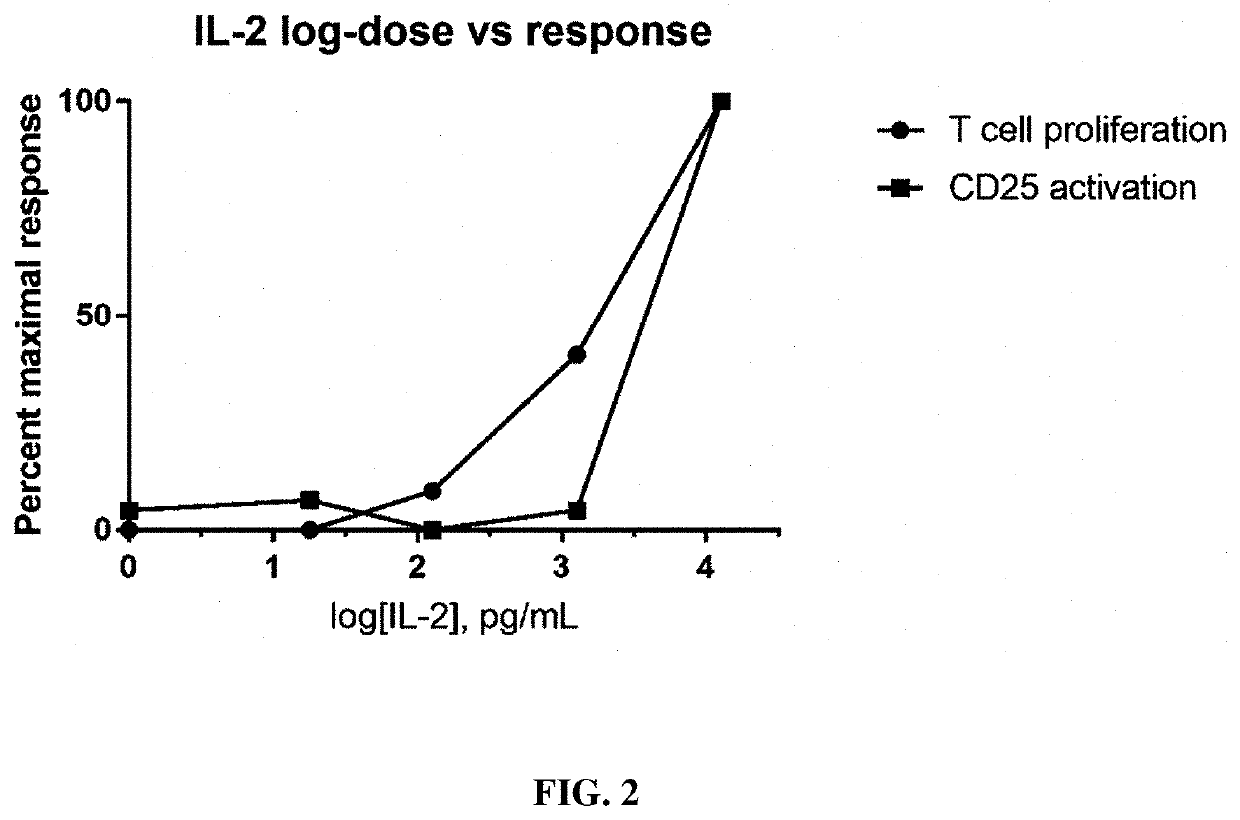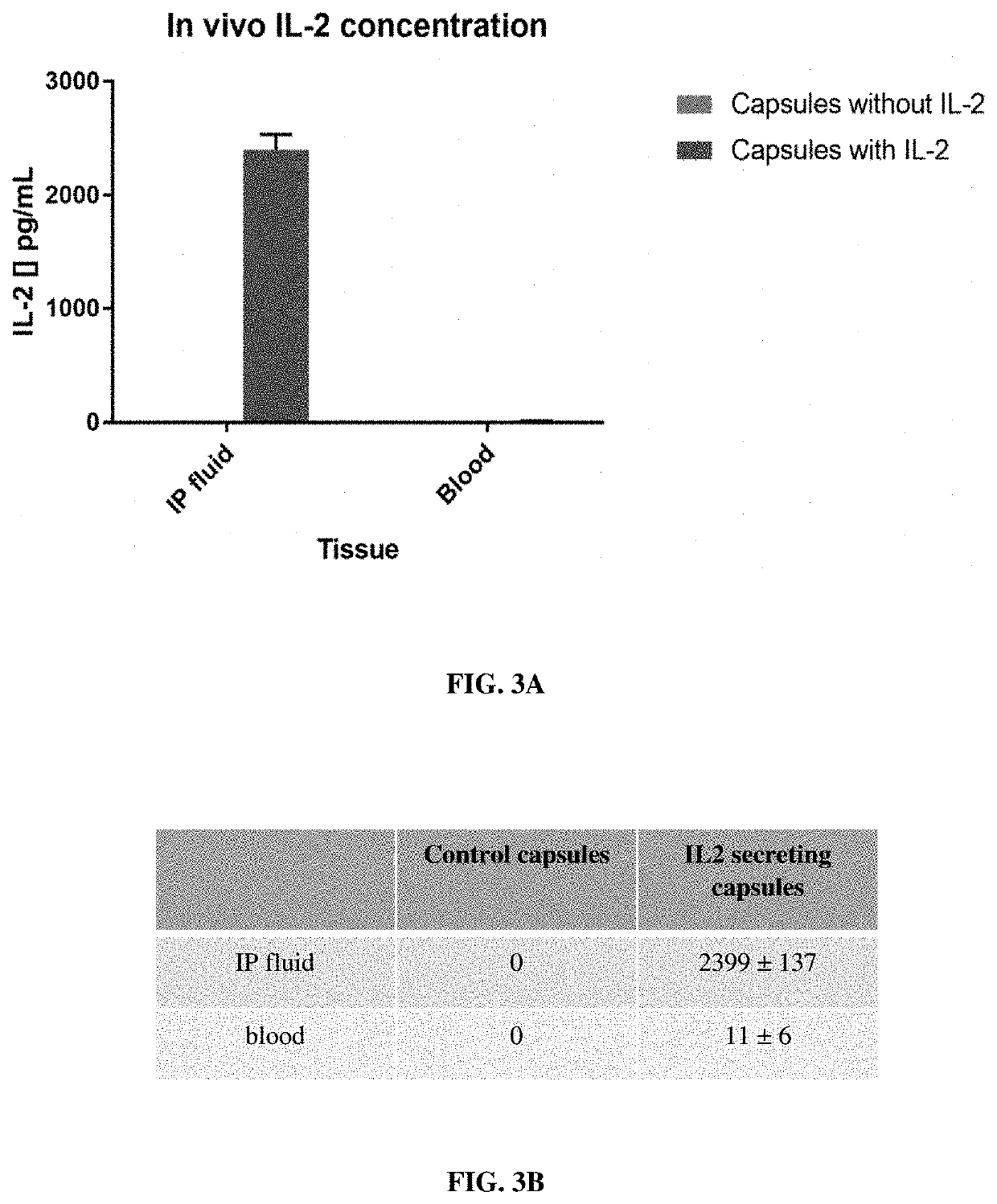Implantable constructs and uses thereof
a technology of implantable constructs and constructs, which is applied in the field of implantable constructs, can solve the problems of fibrosis (walling off), subsequent implant failure, and modest patient response to these approaches, and achieve the effect of improving the efficacy of a therapeutic agent, modulating activation and/or programming
- Summary
- Abstract
- Description
- Claims
- Application Information
AI Technical Summary
Benefits of technology
Problems solved by technology
Method used
Image
Examples
example 1
neering and Cell Culture
[0100]Reagents. Cell culture media and associated reagents, such as transfection media, were purchased through Fisher Scientific. Lipofection reagents (Lipofectamine 3000®) and selection media (puromycin) were purchased from Invitrogen. Expression vectors and helper plasmids were developed and subsequently purchased from VectorBuilder. CellTiter-Glo® was purchased from Promega. TrypanBlue® and Live Dead® stains were purchased from Fisher Scientific. Alginate compounds were purchased from PRONOVA. The encapsulation apparatus used contains syringe pumps from Harvard Apparatus and co-axial nozzles from Ramé-Hart. All animals were purchased from Jackson Labs. Alginate compounds were purchased through PRONOVA.
[0101]Cell Culture. ID8 / MOSEC cells were obtained commercially from EMD Millipore, Sigma. PAN02 or PANC02 mouse cells were obtained from The Division of Cancer Treatment and Diagnosis (DCTD), National Cancer Institute. Human ARPE-19 cells were obtained from A...
example 2
ation of Production by ELISA
[0106]Cells from each group were grown up into a T-150 flask in DMEM media with 10% FBS, 1% Penstrep, and 0.5 μl / 500 ml puromycin. At confluency, culture media was aspirated and 10 ml TrypLE was added. Cells were incubated for 3 minutes at 37° C. in a 5% CO2 humidified atmosphere. Once the cell layer was dispersed, 10 ml's complete media was added to stop the reaction. The cell suspension was transferred to a 50 ml conical tube and centrifuged at 250G for 5 minutes. The supernatant was aspirated, and cells were re-suspended in 1 ml complete media. Cell concentration was counted using a Countess™ hemocytometer. The volume required to achieve a concentration of 10,000 cells in 200 μl was calculated based on the concentration of live cells in the sample. Of the remaining cell suspension volume, 1 million cells were resuspended in 1 ml alginate to be synthesized into core shell capsules. All groups were incubated for 24 hours at 37° C. in a 5% CO2 humidified ...
example 3
oliferation Assay
[0107]A EasySep T Cell Isolation Kit (StemCell Technologies) and associated reagents and devices were used to isolate T cell from C57BL6 mouse spleens (Jackson Labs). Cells were plated in 96 well plates at 10,000 cells / well in 100 ul RPMI 1640. Cells were supplemented with 0.1, 1, 5 or 10 ng / mL of cell produced native IL2 or 1 or 10 ng / mL of recombinant IL-2 (Miltenyi). 24 or 72 hours after incubation at 37 C, cell proliferation (and viability) was measured using CellTiter-Glo Luminescent Cell Viability Assay (Promega).
PUM
| Property | Measurement | Unit |
|---|---|---|
| time | aaaaa | aaaaa |
| average molecular weight | aaaaa | aaaaa |
| average molecular weight | aaaaa | aaaaa |
Abstract
Description
Claims
Application Information
 Login to View More
Login to View More - R&D
- Intellectual Property
- Life Sciences
- Materials
- Tech Scout
- Unparalleled Data Quality
- Higher Quality Content
- 60% Fewer Hallucinations
Browse by: Latest US Patents, China's latest patents, Technical Efficacy Thesaurus, Application Domain, Technology Topic, Popular Technical Reports.
© 2025 PatSnap. All rights reserved.Legal|Privacy policy|Modern Slavery Act Transparency Statement|Sitemap|About US| Contact US: help@patsnap.com



